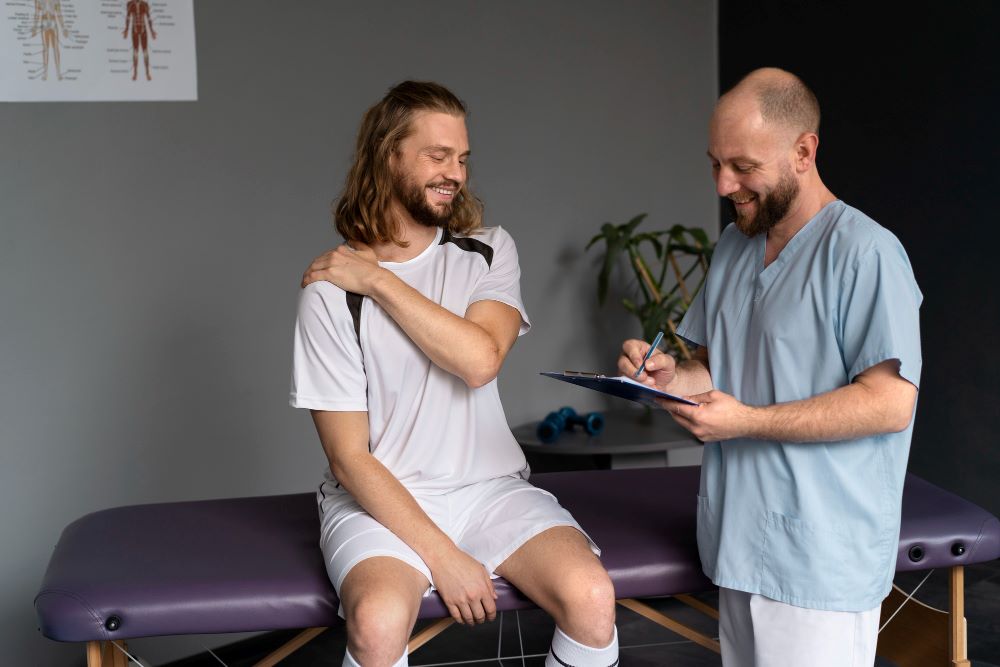
Rotator cuff injuries affect the group of tendons and muscles surrounding the shoulder joint. These injuries can result from overuse, aging, or traumatic events, causing pain and limiting arm mobility. Treatment options range from rest and physical therapy to surgical intervention, depending on the severity of the tear and the patient's goals.
Rehabilitation, incorporating physical therapy, plays a vital role in restoring shoulder function and strength after rotator cuff injuries. This post-injury phase is crucial for comprehensive recovery, helping individuals regain mobility and prevent potential complications. Effective management considers the type and extent of the injury, tailoring interventions to promote optimal healing. Whether through conservative methods or surgical procedures like rotator cuff repair, a personalized approach enhances the likelihood of successful recovery and long-term shoulder health.
Sudden impacts or falls can lead to rotator cuff injuries.
Aging can contribute to wear and tear, weakening the rotator cuff over time.
Activities involving frequent overhead movements or lifting strain the rotator cuff.
Actions like throwing, pitching, or lifting weights increase the risk of rotator cuff injuries.

Rotator cuff injury symptoms can vary among patients, influenced by the size of the tear, age, and other factors. Common symptoms of a rotator cuff injury include:
Diagnosis Diagnosing rotator cuff injuries involves a comprehensive approach, beginning with a thorough clinical evaluation. Healthcare providers assess the patient's medical history, review symptoms, and conduct a physical examination, employing specific tests like the Jobe or Neer tests to elicit signs of rotator cuff damage. Imaging studies, including X-rays and magnetic resonance imaging (MRI), are crucial components of the diagnostic process. In cases where diagnosis remains uncertain or additional intervention is necessary, healthcare professionals may opt for arthroscopy—a minimally invasive procedure allowing direct visualization of the rotator cuff to determine the extent and nature of the injury.
Management of Rotator Cuff Injuries The management of rotator cuff injuries involves a nuanced approach based on factors like tear severity and patient characteristics. Conservative measures, such as rest, ice, and physical therapy, are often employed for minor tears. Surgical interventions like arthroscopic procedures (rotator cuff repair) may be necessary for more significant damage. The decision between repair and other interventions depends on tear specifics and patient health. Post-surgery, rehabilitation through physical therapy is critical for restoring shoulder function. Recovery times vary, emphasizing the importance of an individualized strategy considering the unique aspects of the injury and the patient's overall condition for optimal outcomes.